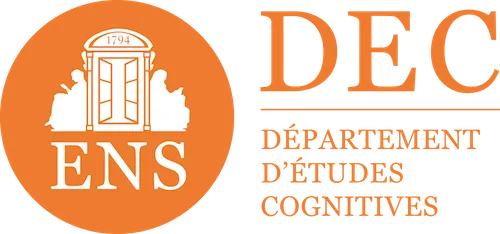

The ADDIE method: a complete guide to designing effective e-learning courses
Introduction: The origins of a reference educational engineering model
The ADDIE method has its roots in the 1970s, within the American Army. Faced with the need to effectively train many soldiers in complex technical skills, military educational designers developed this systemic instructional design model.
The acronym ADDIE (Analyze, Design, Develop, Develop, Implement, Evaluate) structures a rigorous process that ensures the consistency of training programs. This educational engineering approach gradually migrated to civilian companies in the 1980s, quickly becoming the reference in the design of learning devices.
Today, the ADDIE model remains one of the most used strategies in digital and face-to-face training. However, the emergence of new technologies and artificial intelligence is questioning its traditional application. How can this proven method adapt to the contemporary challenges of e-learning and corporate training?
In short: The essential concepts to remember
The ADDIE method structures instructional design into five sequential but iterative steps:
Analyze : Identify needs, learners, and constraints to define specific learning goals.
Design : Design the pedagogical architecture, select the modalities and structure the learning progression.
Develop : Create content, exercises and evaluations in accordance with design specifications.
Implement : Deploy training, train teams and launch learning paths.
Evaluate : Measure efficiency, analyze results and optimize the system for future iterations.
A - Analyze: Laying the foundations of the educational project
The analysis phase is the critical first step in any effective instructional design process. It consists in precisely identifying training needs, analyzing the characteristics of target learners and evaluating the organizational constraints of the system.
This fundamental step determines measurable learning goals and targeted skill levels. The analysis also includes the identification of available resources, the mode of deployment (face-to-face, remote or mixed) and the success factors.
Designers use various tools during this phase: questionnaires, interviews with teams, analysis of performance data. This structured approach makes it possible to build a solid framework for the development of the training system.
D - Design: Structuring the learning architecture
Design transforms analysis into concrete and detailed educational architecture. This phase defines the progression of the modules, selects the teaching methods (video, interactive quizzes, simulations) and designs the evaluation activities.
The design stage also determines the ergonomics of the course, the creation of the content storyboard and the planning of interactions between learners and content. Here, the trainers establish the prototype of the device, defining each element of the program: duration of the sessions, necessary materials, methods of communication.
Didask's educational AI revolutionizes this phase by automatically proposing optimized structures. Our technology is based on our engineering in cognitive science to recommend the most effective teaching methods and save valuable time on design
D - Develop: Create educational content and resources
Development makes design a reality by producing all the teaching materials. This technical phase transforms storyboarding into interactive e-learning modules, creating exercises, multimedia resources, and assessments.
Development teams use different author tools to design engaging content. They incorporate videos, interactive documents, adaptive quizzes, and immersive learning situations. Quality control verifies the pedagogical and technical coherence of each module.
This stage traditionally represents an important part of project time. Didask's educational AI drastically accelerates this process by automatically generating content. Our system creates adaptive modules and customized evaluations, radically transforming development effectiveness.
I - Implement: Deploy and manage the implementation
Implementation marks the transition from design to operational reality of the device. This phase organizes the technical deployment on the LMS, trains the reference trainers and launches the first groups of learners.
The implementation coordinates all aspects: planning sessions, communicating to teams, activating individual courses and monitoring participation. Training managers pilot this crucial step, which determines the adoption of the program.
A successful implementation is based on structured change management. It mobilizes managers, creates learning communities and can possibly offer differentiated support according to profiles.
E - Evaluate: Measure impact and optimize continuously
The evaluation concludes and enriches the ADDIE cycle by measuring the real effectiveness of the system. It combines formative assessment (during the course) and summative assessment (validation of acquired skills).
This phase analyzes learning results through various indicators: completion rate, assessment scores, transfer to a professional situation. The assessment also measures the ROI of training and its impact on overall performance.
The data collected feeds into the continuous improvement of the system. They make it possible to adjust the content, to optimize the courses and to enrich the training offer. This iterative approach guarantees the lasting effectiveness of the system.
The advantages of the ADDIE model for your e-learning projects
The ADDIE model offers a structured approach that maximizes the chances of success. Its rigorous methodology reduces the risk of failure and optimizes the allocation of resources. Organizations that use it see a significant improvement in their indicators.
Key benefits include:
- Application flexibility : adaptable to face-to-face, distance or mixed training
- Global vision : integration of all the dimensions of the educational project
- Continuous improvement : iterative process allowing permanent optimization
- Cost control : early identification of needs avoids budgetary excesses
- Guaranteed quality : each phase validates the next, ensuring final consistency
The integration of educational AI modernizes this process by automating complex tasks. This technological evolution maintains methodological rigor while significantly speeding up design processes.
The ADDIE model therefore remains an essential reference framework, which is particularly powerful when enriched with contemporary technological innovations to meet the current challenges of digital training.
Make an appointment directly with our eLearning experts for a demo or simply more information.












